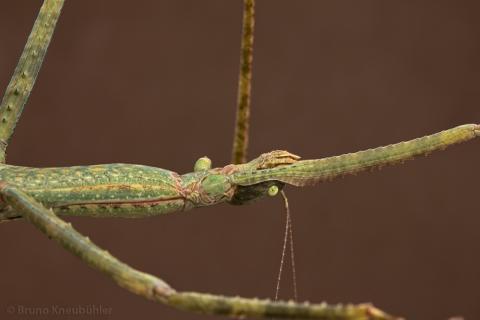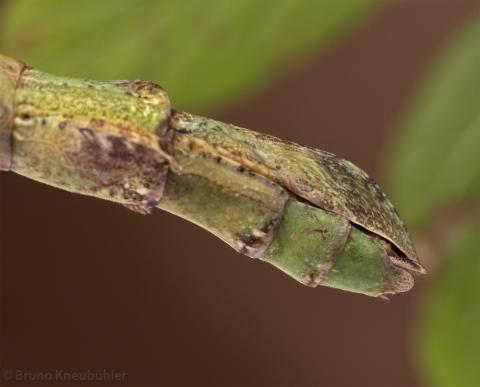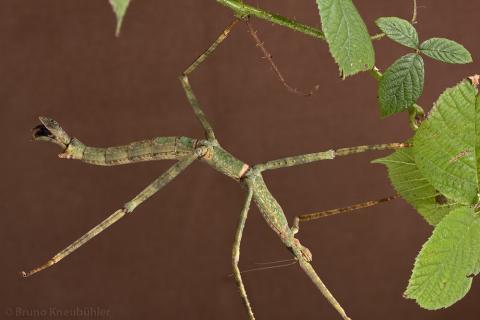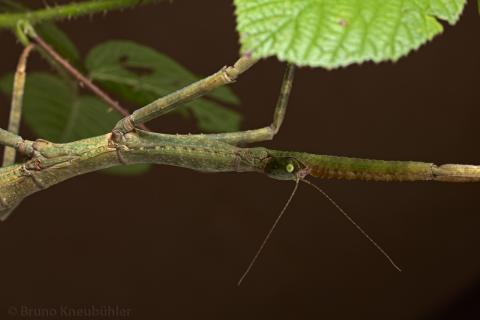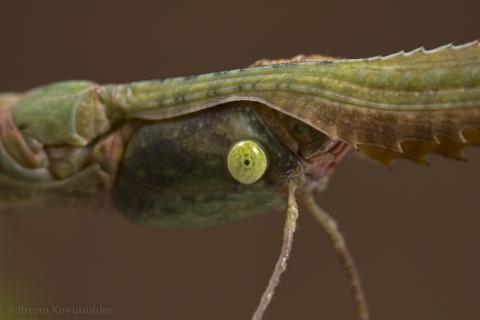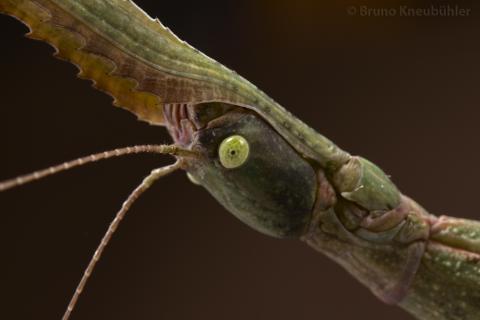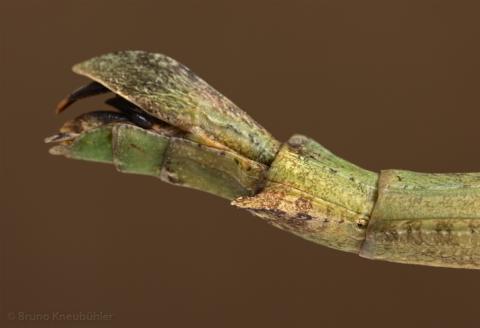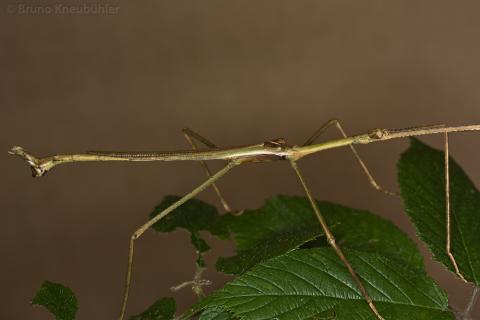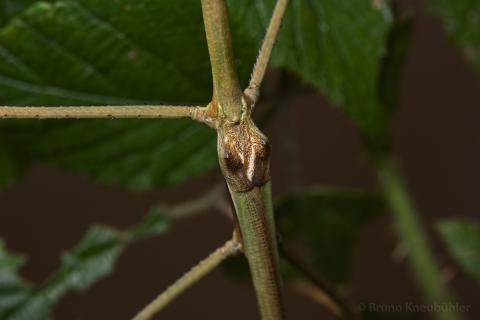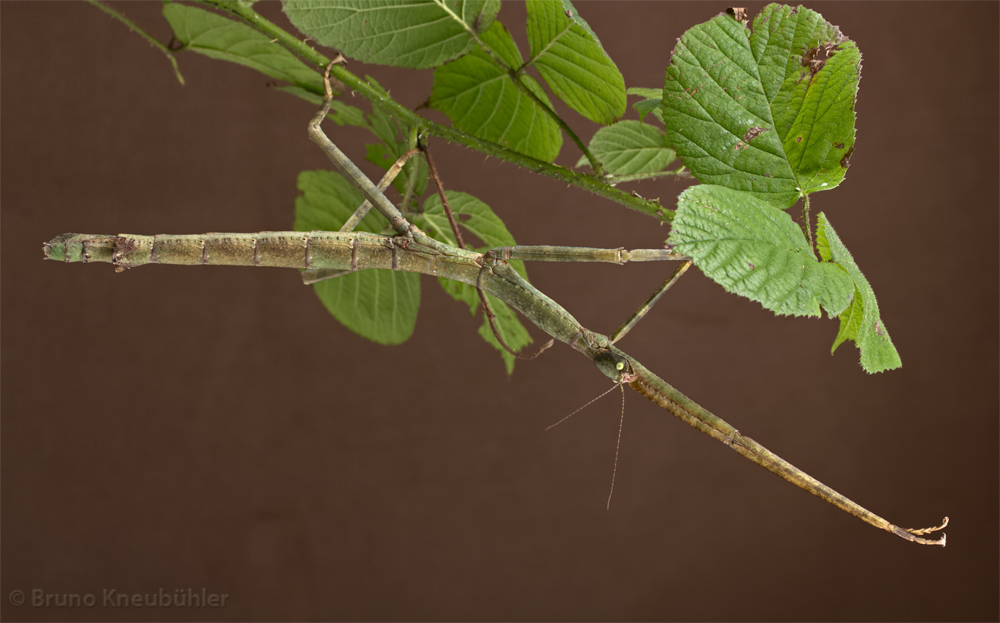
Genus
Species
Stock
CLP
511
PSG
284a
Culture status
Probably lost
Foodplants
Bramble (Rubus spp.)
Beech (Fagus sylvatica)
Oak (Quercus robur)
Salal (Gaultheria shallon)
Eucalyptus spp.
Breeding notes
(by Bruno Kneubuehler)
General Notes
- synonym: Pharnacia magdiwang (Lit & Eusebio, 2008)
- 2010 - a Pharnacia species from Samar Island (Philippines) has been imported and bred for the first time by Bruno Kneubuehler
- 2011 - identified as Ph. ponderosa by Joachim Bresseel (Belgium)
- 2011 - one should be careful not to mix this island form ("Samar") with Ph. ponderosa cultures from different origins (like other Philippine islands). There are minor differences between different island forms of this species, which may eventually even lead to the establishment of subspecies - after careful examinations (which is being researched by Joachim Bresseel). Thus hybridisation should to be avoided
_________________
Origin
- Mt. Capotoan (Samar Island, Philippines)
_________________
Females
- big and very sturdy insects
- adulte females which are ready to lay eggs become thumb thick
- up to 21 cm long
- main colouration is green-brown, irregularely covered with darker, reddish-brown spots
- along the ventral ridges of the mid and hind femur is a thin blue line
- eyes are strongly green
- alongside both sides of the mesothorax a fine reddish line appears when the adult females have eaten a lot - and especially during their defence posture
- no wings present
- antennae are a bit shorter than half of their fore legs
_________________
Males
- much thinner and shorter than the females
- about 13 - 14 cm long
- main colouration is brown-green, with some darker spots and areas
- especially the unterside of meso- and metathorax is strongly glossy-green coloured
- the ventral abdomen as well as the inner surface of the knees is green
- many small spines on the legs
- fully developed wings - which reach as far as the 6th abdominal segment
- a white line runs alongside the outer margin of hind- and forewings
- the median margins of the forewings (tegmina) are also light brown or almost white for the Ph. pondersa "Samar" stock
- the membranous part of the hindwings (anal region of the alae) is transparent and smoke-coloured
- antennae are about two-third of the lenght of the forelegs
_________________
Nymphs (L1)
- big nymphs, up to 2,5 cm long
- antennae are very short and dark brown
- long legs
- mainly green in colour, with some darker areas
_________________
Eggs
- about 5 x 4.5 mm
- dark, grey-brown coloured
- surface is slightly shiny
- robust eggs, with a strong egg shell
- eggs get mouldy quite quickly (but they hatch anyway). Therefore I do recommend to incubate the eggs with the HH-methode on dry sand. This will reduce mould growth ...
_________________
Food Plants
- nymphs as well as adults feed easily on bramble (Rubus sp.)
- other well accepted food plants: beech (Fagus sylvatica), oak (Quercus sp.), Salal (Gaultheria shallon)
- Eucalyptus is also accepted (Pablo Rubiño, Argentina)
- especially adulte females can eat quite a lot, which does not come as a surprise when taking their very bulky appearance into account
_________________
Defensive Behaviour
- freshly hatched nymphs are quite docile
- as the nymphs grow bigger, so does their fidgety nature when they feel threatened
- sometimes even movements in front of a (still closed) cage with older nymphs and adult males are enough to evoke a strong defensive behaviour - they drop to the ground and wriggle about frantically for some time
- freshly adult do also display this frantic behaviour
- but as the adulte females grow bigger, then they change their defence behaviour to assuming a s-shaped posture with their hind legs spread out wide. Then they try to frighten a potential predator by clapping their hind legs together.
It might be too dangerous for the thick females to fall down, cause they might easily get harmed due to their weight - contrary to nymphs and males - sometimes adulte males also try to escape by fluttering with their wings, but they are not capable to actually fly
_________________
Breeding Notes
- this is a very easy to breed and impressive species
- incubation with the HH-method (on very slightly damp sand) yields a good hatching ratio
- some moss spread over the eggs reduces mould growth and strongly facilitates successful hatching
- incubation time at room temperatures (20 - 23°C) is about 4 - 4,5 months
- hatching ratio of the first generation was 50+ %
- keep the nymphs in a cage with good ventilation
- take care that the humidity does not drop too low
- a constantly wet paper towel on the floor of the cage helps raising humidity
- only small nymphs can be kept in a medium sized Faunabox (or similar cage)
- move nymphs to a bigger cage as they grow bigger
- the cage for adult specimens should be at least 60 cm high
- I have never sprayed nymphs or adults with water
- make shure that nymphs, which are about to undergo their adult moult, do not find places to hang from near the bottom of the cage - otherwise moults might turn out fatal
- males will be adult after about 3 - 3,5 months (at 20 - 23°C), females after 4,5 - 5 months
- females start to lay eggs after about 2 - 3 weeks
- eggs are just dropped to the ground
- co-housing of Ph. ponderosa cultures which originate from different localities (like different islands) should be avoided - to avoid hybridisation

